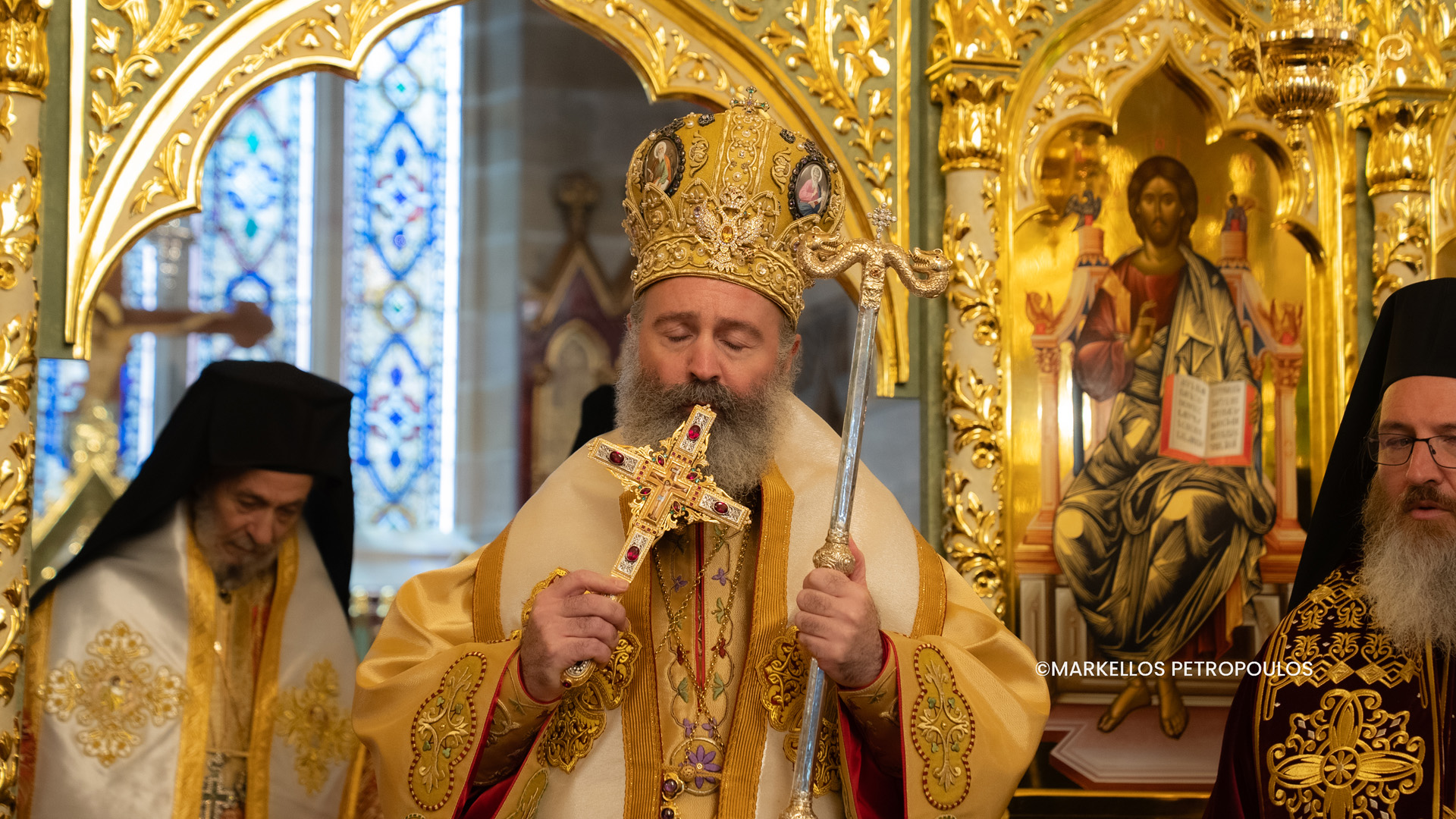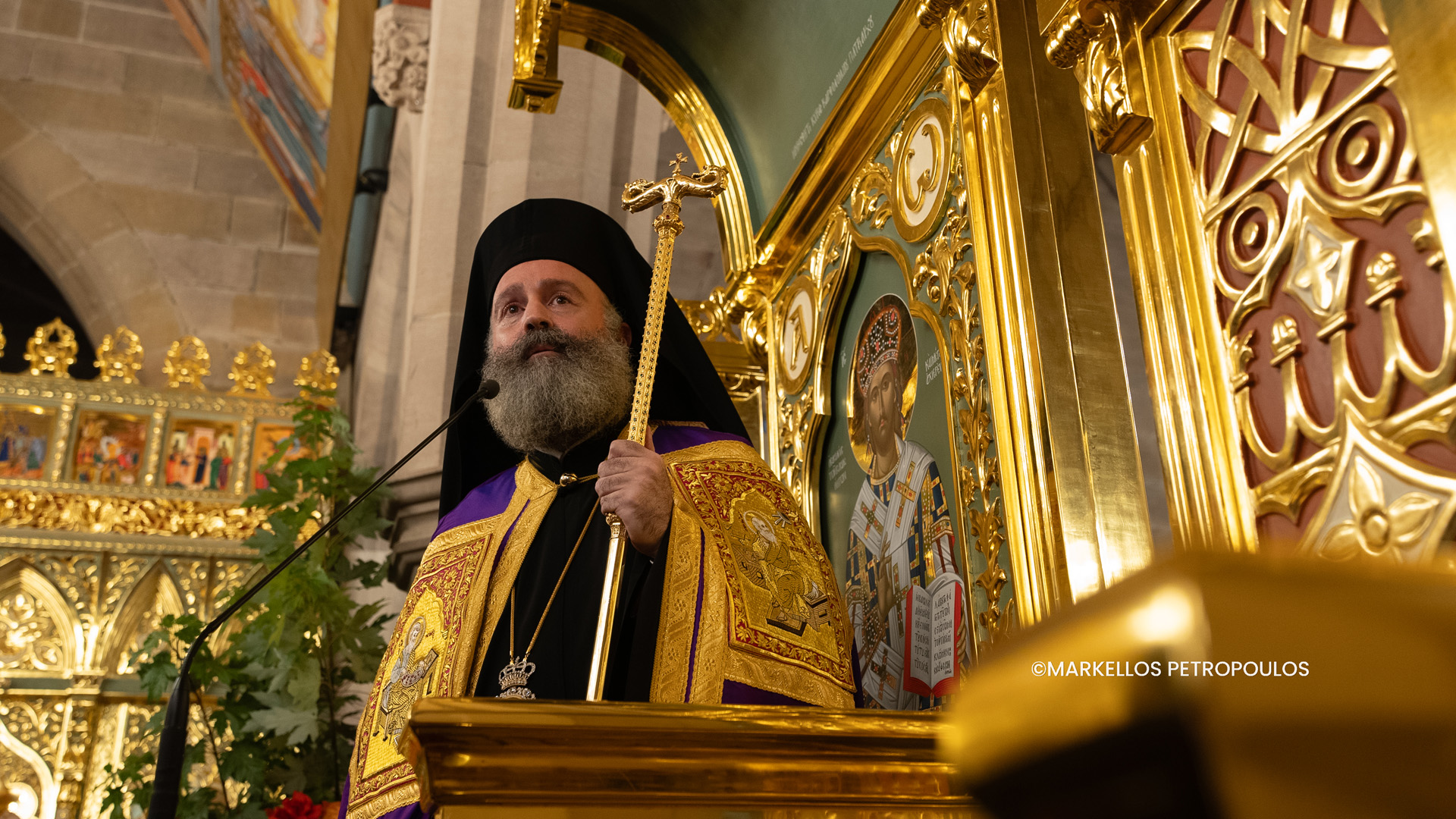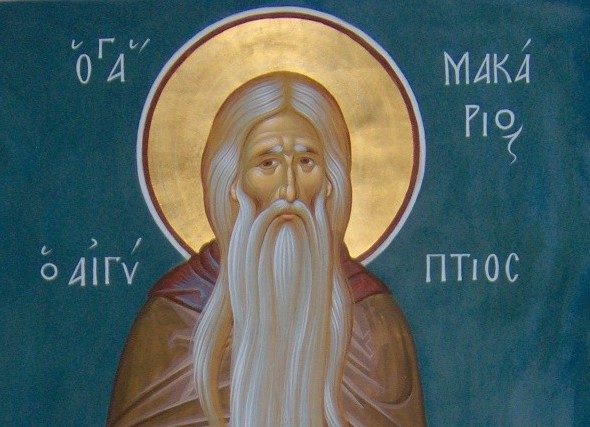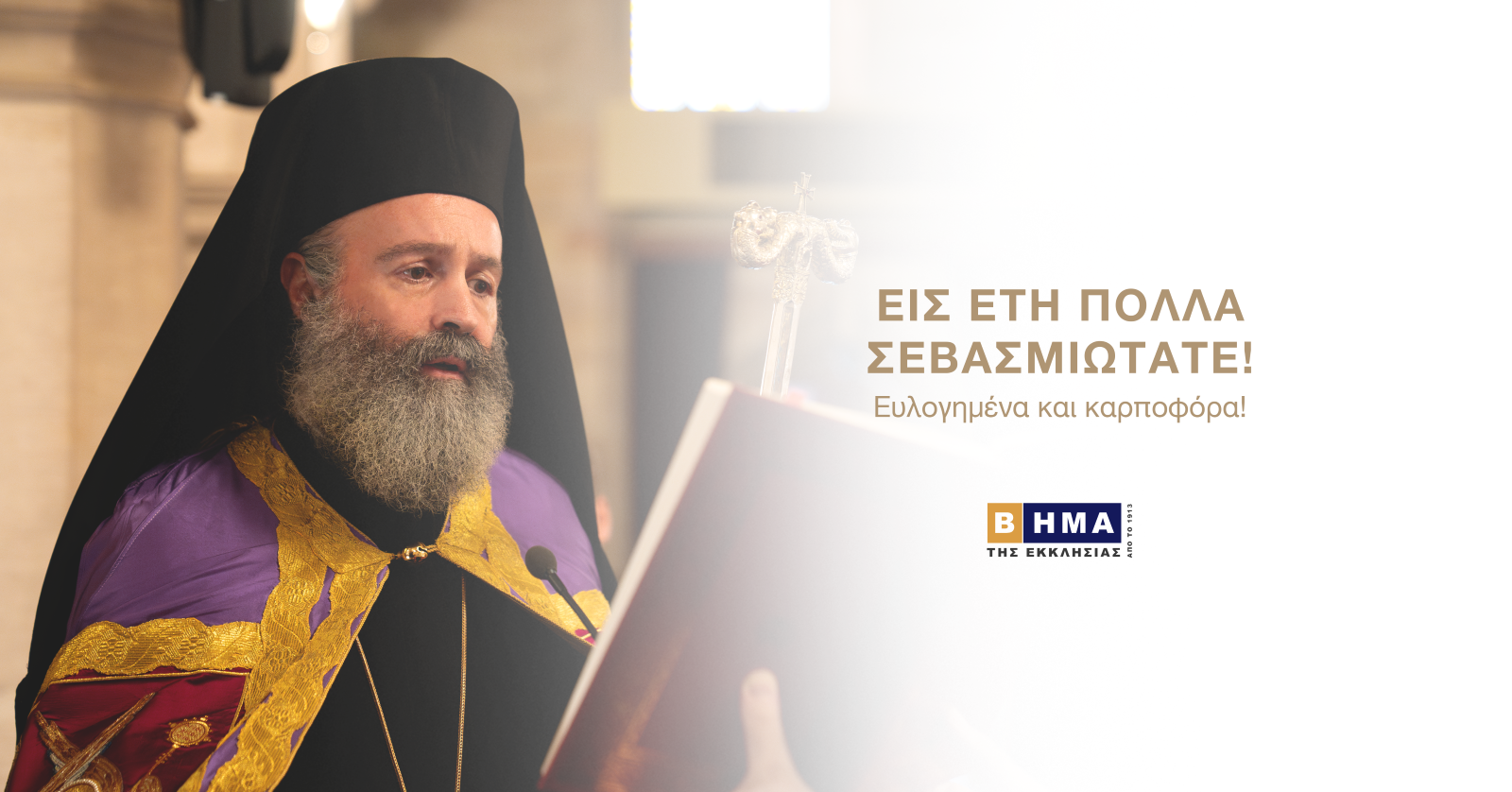Greatmartyr Euphemia the All-praised (11 July)


The Miracle of Saint Euphemia the All-Praised: The holy Great Martyr Euphemia (September 16) suffered martyrdom in the city of Chalcedon in the year 304, during the time of the persecution against Christians by the emperor Diocletian (284-305). One and a half centuries later, at a time when the Christian Church had become victorious within the Roman Empire, God deigned that Euphemia the All-Praised should again be a witness and confessor of the purity of the Orthodox teaching.
In the year 451 in the city of Chalcedon, in the very church where the glorified relics of the holy Great Martyr Euphemia rested, the sessions of the Fourth Ecumenical Council (July 16) took place. The Council was convened for determining the precise dogmatic formulae of the Orthodox Church concerning the nature of the God-Man Jesus Christ. This was necessary because of the widespread heresy of the Monophysites [“mono-physis” meaning “one nature”], who opposed the Orthodox teaching of the two natures in Jesus Christ, the Divine and the Human natures (in one Divine Person). The Monophysites falsely affirmed that in Christ was only one nature, the Divine [i.e. that Jesus is God but not man, by nature], causing discord and unrest within the Church. At the Council were present 630 representatives from all the local Christian Churches. On the Orthodox side Anatolius, Patriarch of Constantinople (July 3), Juvenal, Patriarch of Jerusalem (July 2), and representatives of Saint Leo, Pope of Rome (February 18) participated in the conciliar deliberations. The Monophysites were present in large numbers, headed by Dioscorus, the Patriarch of Alexandria, and the Constantinople archimandrite Eutychius.
After prolonged discussions the two sides could not come to a decisive agreement.
The holy Patriarch Anatolius of Constantinople proposed that the Council submit the decision of the Church dispute to the Holy Spirit, through His undoubted bearer Saint Euphemia the All-Praised, whose wonderworking relics had been discovered during the Council’s discussions. The Orthodox hierarchs and their opponents wrote down their confessions of faith on separate scrolls and sealed them with their seals. They opened the tomb of the holy Great Martyr Euphemia and placed both scrolls upon her bosom. Then, in the presence of the emperor Marcian (450-457), the participants of the Council sealed the tomb, putting on it the imperial seal and setting a guard to watch over it for three days. During these days both sides imposed upon themselves strict fast and made intense prayer. After three days the patriarch and the emperor in the presence of the Council opened the tomb with its relics: the scroll with the Orthodox confession was held by Saint Euphemia in her right hand, and the scroll of the heretics lay at her feet. Saint Euphemia, as though alive, raised her hand and gave the scroll to the patriarch. After this miracle many of the hesitant accepted the Orthodox confession, while those remaining obstinant in the heresy were consigned to the Council’s condemnation and excommunication.
After an invasion by the Persians during the seventh century, the relics of Saint Euphemia were transferred from Chalcedon to Constantinople, into a newly built church dedicated to her. Many years later, during the period of the Iconoclast heresy, the reliquary with the relics of the saint was cast into the sea by order of the Iconoclast emperor Leo the Isaurian (716-741). The reliquary was rescued from the sea by the ship-owning brothers Sergius and Sergonos, who gave it over to the local bishop. The holy bishop ordered that the relics be preserved in secret, beneath a crypt, since the Iconoclast heresy was continuing to rage. A small church was built over the relics, and over the reliquary was put a board with an inscription stating whose relics rested within. When the Iconoclast heresy was finally condemned at the holy Seventh Ecumenical Council (in the year 787), during the time of Saint Tarasius, Patriarch of Constantinople (784-806) and the emperor Constantine VI (780-797) and his mother Saint Irene (797-802), the relics of the holy Great Martyr Euphemia were once again solemnly transferred to Constantinople.
In 451, during the reign of the Sovereigns Marcian and Pulcheria, the Fourth Ecumenical Council was convoked in Chalcedon against Eutyches and those of like mind with him. After much debate, the Fathers who were the defenders of Orthodoxy, being 630 in number, agreed among themselves and with those who were of contrary mind, to write their respective definitions of faith in separate books, and to ask God to confirm the truth in this matter. When they had prepared these texts, they placed the two tomes in the case that held Saint Euphemia’s relics, sealed it, and departed. After three days of night-long supplications, they opened the reliquary in the presence of the Emperor, and found the tome of the heretics under the feet of the Martyr, and that of the Orthodox in her right hand. (For her life, see Sept. 16.)
Saint Euphemia is commemorated on September 16, the day on which she was martyred. On this day is commemorated the miracle-working power of her honorable relics, which was manifested at the time of the Fourth Ecumenical Council in Chalcedon. This Council was convened during the reign of Emperor Marcian and Empress Pulcheria in the year 451 A.D., after the death of Emperor Theodosius the Younger. The reason for summoning this Council was the heresy of Dioscorus, Patriarch of Alexandria, and Eutyches, an archimandrite from Constantinople who had spread the false teaching that in Christ the Lord there are not two natures, divine and human, but only a Divine Nature.
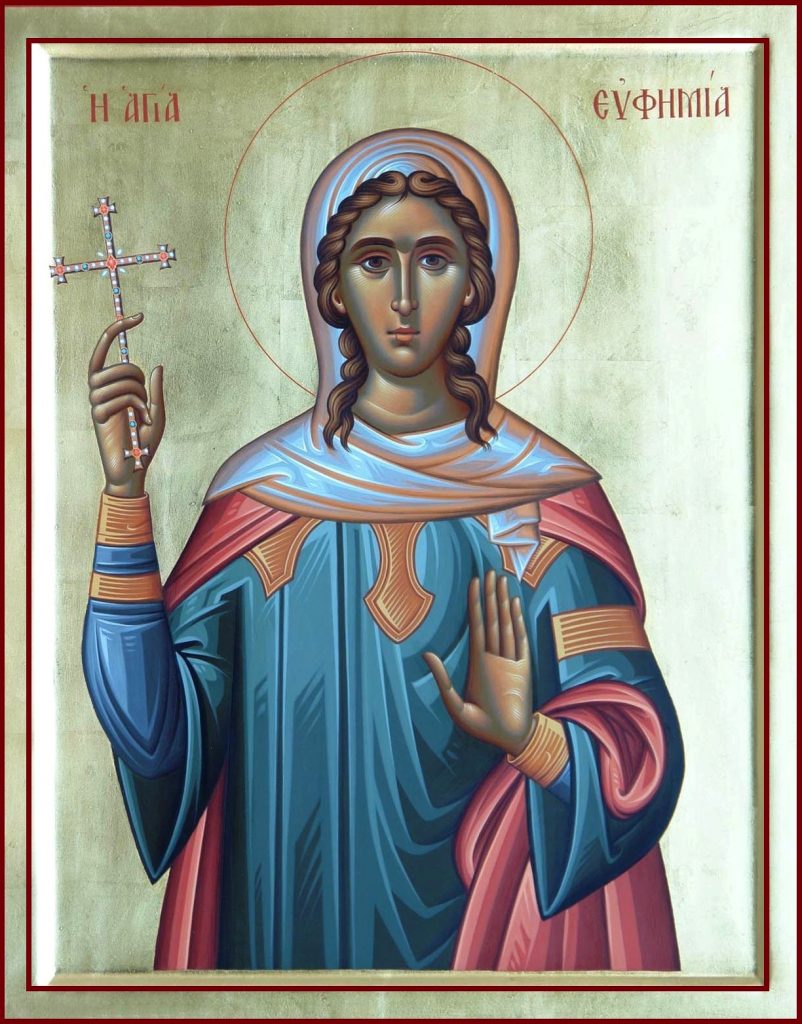

At this Council, the most prominent roles were played by Anatolius, Patriarch of Constantinople, and Juvenal, Patriarch of Jerusalem. Because a decision could not be reached through debates and testimonies from both sides, Patriarch Anatolius proposed that the Orthodox and the heretics each write down their confession of faith, and that they then be placed into the coffin where the relics of St. Euphemia lay. They all agreed to this. Therefore, the two confessions of faith were written and placed on the bosom of the great-martyr. The coffin was closed and sealed with the emperor’s seal, and soldiers were commanded to watch over it. All the members of the Council then spent three days in prayer and fasting. When they opened the coffin on the fourth day, they found the Orthodox Confession of Faith in the right hand of the saint and the heretical confession of faith under her feet.
Thus, by the power of God, the dispute was decided in favor of Orthodoxy. During the reign of Emperor Heraclius, the relics of St. Euphemia were translated from Chalcedon to Constantinople, to the church dedicated to her near the Hippodrome. The iconoclastic Emperor Leo the Isaurian ordered that these relics be thrown into the sea, but the coffin was miraculously translated to the island of Lemnos and was placed in the Church of the Holy Martyr Glyceria. Then, during the reign of the Empress Irene, the coffin with the relics of St. Euphemia was returned to Constantinople, to its former place. From time to time, blood has flowed from these relics, to help those who are ill or in misery.
Apolytikion of Great Martyr Euphemia
Third Tone
O Euphemia, Christ’s comely virgin, thou didst fill the Orthodox with gladness and didst cover with shame all the heretics; for at the holy Fourth Council in Chalcedon, thou didst confirm what the Fathers decreed aright. O all-glorious Great Martyr, do thou entreat Christ God that His great mercy may be granted unto us.
Kontakion of Great Martyr Euphemia
Third Tone
You made fervent effort in your struggles of trial, in your struggles of faith for Christ your bridegroom. But even now, intercede with the Theotokos that the heresies and insolence of enemies be trod beneath the feet of our rulers, O All Praised, who received and kept the Decree of the 630 God-bearing Fathers.
Source: goarch.org / oca.org


